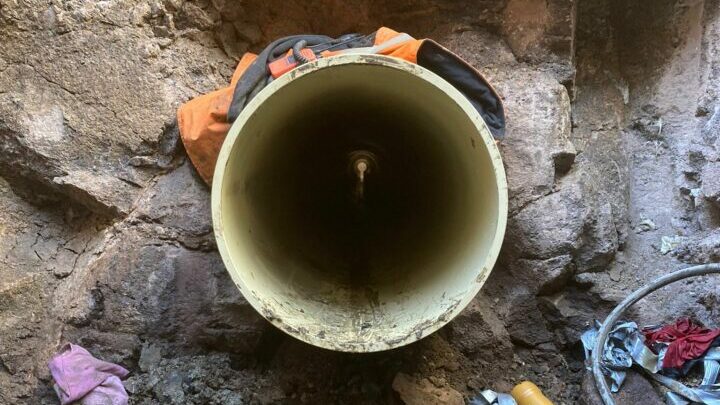Areas that were previously goldfields pose a challenge for trenchless pipeline installations due to the unpredictability of the ground conditions and the high likelihood of hitting reinstated ground. In this situation, communication between the principal contractor and subcontractor is vital as the best course of action can change at any moment, potentially influencing the timeline, costs and outcome for the project. This scenario played out in a project in Ballarat, where Edge Underground needed to suggest alternative options to account for the ground conditions.
In areas around Australia that have a gold rush history, such as Ballarat and Bendigo, the likelihood of hitting previously excavated ground, regardless of depth, is extremely high and should be expected. And like any area where the ground has been previously excavated, there is always a concern about how it was backfilled and reinstated.
Having worked with Jaydo on multiple projects previously, Edge Underground had a pre-established rapport with the principal contractor and both companies had a good knowledge of each other, their capabilities and their proven track record. Along with clear communication, this proved to be essential in a project in Ballarat when – as expected – areas of reinstated ground were hit, requiring a rethink on how to approach the pipeline installation.
Reinstated ground: a legacy of the goldrush
Stuart Harrsion, Managing Director at Edge Underground, said Ballart is well-known to have areas of reinstated ground, so when they teamed with Jayco to drill four bores, the project team knew there was a high chance of hitting such an area during the drilling process, resulting in a change of approach or even termination of the drill.
“We were only about two metres into drilling the first bore when we hit reinstated (non-virgin) ground – we were hitting a mixture of rubble and scrap, and there was no consolidation. The conditions meant the ground was undrillable,” Mr Harrsion said.
“So we then tackled the line for the first bore from the opposite direction to see if there was a possibility of the line being able to be successfully completed. However, shortly after we began drilling, we realised the whole area had been previously excavated.
“We never like to say that a bore cannot be done, but in this situation where you’re trying to install a sewer pipeline on a fine grade in non-virgin ground, there is a high likelihood that you’re not going to be able to complete the line on-grade.”
As the ground conditions would not allow the pipeline to be installed to the required specifications, Edge Underground presented a number of solutions that could be relevant.
“One of the options that we offered was to pressure grout the ground to create consolidation and create a drill medium that would be effective and allow us to complete the bore,” Mr Harrison said.
“However, the unknown in that situation is that as the ground was backfilled many, many years ago, at a time when anything available was used to fill the excavated ground, which could make it undrillable no matter the chosen solution. Unfortunately, this was the situation we came across – we found metal in the borehole. Due to metal objects being found and the ongoing, unknown nature of the backfilling, the decision was made that that line had to be cut.”
While isolated areas of previously excavated ground were hit during the next three lines, they were able to be completed.
“The next three bores were completed right in the heart of Ballarat with 750 GRP, which did come across some challenging ground conditions but not enough that they had to be terminated,” Mr Harrison said.
“There was also originally a third section where drilling was to take place, however when the team dug the shaft, the ground was backfilled and water saturated. Due to this, the decision was made early that it wasn’t worth attempting to drill.”
Mr Harrison said that while all the potential lines weren’t able to be completed, a lot of money was saved compared to if they had kept trying to do the installation when it was clear it was not going to work.
“The lines we were able to install were on grade with the specifications of the client. Even with the difficult ground conditions we came across, we were able to complete the lines accurately,” Mr Harrison said.
Communication for informed decision-making
Mr Harrison said in situations like this it is important for the microtunnelling subcontractor to highlight the risks of any options provided so that an informed decision can be made.
“As the drilling contractor, it is our responsibility to not only talk about what we can do, but really highlight the risk of some ground conditions and what they can present, and ultimately how that could affect the cost of the installation if the client chooses to proceed with any method of pipeline installation,” Mr Harrison said.
“No one wants to hear that the cost could increase, but clients really don’t want to hear that it could double or triple, or that you can’t even guarantee that you’re going to be successful. So there’s a duty of trenchless professionals to help the people that we’re working with understand that risk so they can make informed decisions about what the best method of construction for their particular installation is.”

